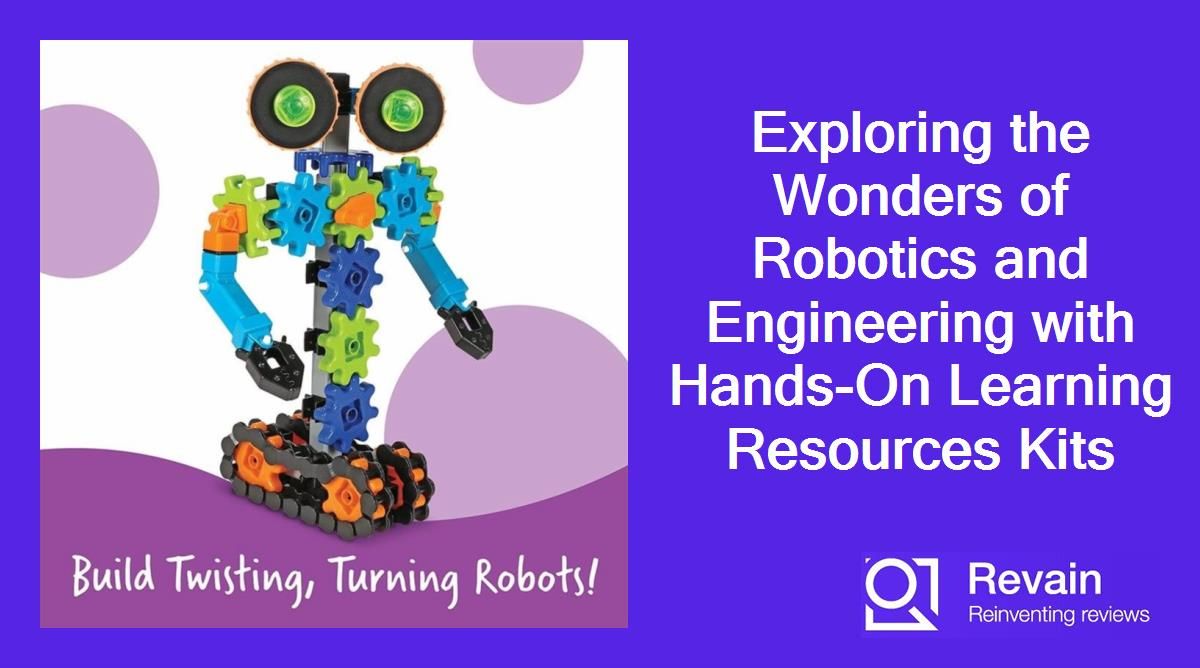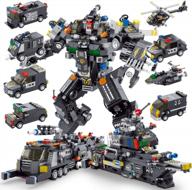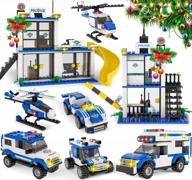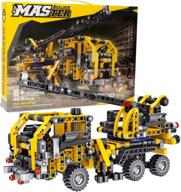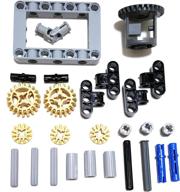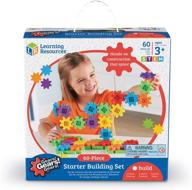How to Assemble the Robot Models?
The Learning Resources Robots Motion Engineering kit comes with plastic pieces and hardware that can be assembled into a variety of robot models. Here are some tips for smoothly assembling your robot:
1. Read the Instructions
Each robot model has its own set of detailed step-by-step instructions. Read through all the instructions before beginning so you understand the full process and workflow. The instructions will guide you on:
- Which pieces and hardware are needed
- The order of assembly
- How to connect each component
2. Organize the Parts
Sort out all the necessary parts for your specific robot based on the instructions. Lay them out in front of you so they are easily accessible. Separate the plastic pieces from the hardware like screws, nuts, and washers.
3. Follow Each Step
Carefully work through each step of the instructions. Assemble one piece or joint at a time. Insert screws, add washers, and gently tighten nuts to secure each plastic component together. Take your time and double check alignments to avoid mistakes.
4. Modify and Customize
Once you are comfortable with the basics, feel free to get creative and modify your robot design in unique ways. Experiment with the parts to build custom versions beyond the standard instructions.
With some patience and care, you can successfully assemble exciting robot models using the Learning Resources engineering kit. The detailed instructions will guide you through constructing movable joints, attaching bases, and bringing your robot to life one piece at a time.
Another interesting products
How to Program the Robots to Move and React?
The Learning Resources Engineering kit includes snap circuits that allow you to program your assembled robots to perform motions and react to inputs. Here are some tips on coding behaviors:
Use Coding Cards
The kit includes preset coding cards that you can insert into the main control box. Each card has punch outs that dictate a pre-programmed movement like:
- Move forward for 3 seconds
- Spin left for 1 second
- Pause for 0.5 seconds
Connect Sensors
Sensors like infrared detectors and buttons can be connected to the control box. Code cards can react to sensor triggers with motions like:
- When button pressed, move arm up
- When infrared triggered, spin right
Modify with Coding Apps
For more advanced coding options, you can connect the control box to a tablet or computer via USB. Drag and drop block coding apps allow you to program custom movements and reactions beyond the physical code cards.
Troubleshoot Issues
If the robot does not move as expected, double check the coding cards alignment, sensor connections, battery power, and USB connections to other devices. Modify your code one block at a time to isolate any bugs.
With some creative programming, you can make your robots dance, navigate obstacles, and react to the environment. Experiment with different code combinations to bring your robotic creations to life!
How to Use the Snap Circuits to Power and Control the Robots?
The Learning Resources Engineering kit includes snap circuit components that allow you to build electronic circuits to power and control your robots. Here is an overview of using the snap circuits:
1. Install the Battery Pack
The snap circuit system is powered by a simple battery pack that snaps into place. Install 4 AA batteries aligned according to the marked polarity to provide electricity to the circuits.
2. Connect Wires and Components
The color coded snap wires allow you to securely connect components. Parts like buttons, motors, lights, sensors, and integrated circuits snap into place on the plastic grid included in the kit. Follow diagram examples or create your own circuits.
3. Control the Robot
Circuits with switches, buttons, and sensors allow user input. Integrated circuit logic chips allow you to program reactions like:
- When button pressed, activate motor
- If light sensor triggered, turn on LED
4. Troubleshoot Issues
Check battery alignment, wire connections, and component orientation if the circuits are not functioning. Test each component individually to isolate any problems. Snap circuits allow for easy troubleshooting and reconfiguring as needed.
With some creativity, the snap circuits can bring your robotic creations to life with light, motion, and interactive responses. Have fun exploring electronic circuits to power and control your robots!
How to Combine Multiple Kits for More Advanced Projects?
The Learning Resources engineering kits are designed to integrate and combine for more complex builds. Here are some tips for unlocking new projects by mixing and matching components from different kits:
Combine Motion Mechanisms
Connect pieces from different motion kits to create new mechanisms like:
- Add spinning pulley wheels from the Motion & Design kit to robots from the Automation & Robotics kit
- Connect the Energy & Forces catapult parts to the Automation & Robotics robotic arm
Integrate Electronic Components
Incorporate snap circuits from the Science & Electronics kits to add lights, sounds, and sensors:
- Make a light-up sign with LEDs from the Electricity & Circuits kit
- Add a buzzer from the Magnetism & Electricity kit that reacts to sensors
Modify Base Structures
Use frame pieces, wheels, and bases across kits for modified structures:
- Mount the Energy & Forces seesaw on a wheeled base from the Automation & Robotics kits
- Add structural pieces from the Motion & Design kit to expand on Automation & Robotics builds
Customize Coding Programs
Combine coding cards and apps from multiple kits for advanced programming:
- Use Motion & Design rotation coding with Automation & Robotics motion cards
- Incorporate Logic & Reasoning sensors into Automation & Robotics code
With creativity and an experimental mindset, you can build unique engineering projects by combining pieces across multiple Learning Resources kits.
How to Troubleshoot Problems with the Robots Not Working Properly?
If your robot build from the Learning Resources engineering kit is not functioning as expected, there are some troubleshooting steps you can take:
Check the Power Sources
Ensure batteries are fresh and installed correctly to power the snap circuits. Check that USB cables are securely connected to provide consistent power. Test components individually to isolate any dead batteries or faulty power supplies.
Inspect the Components
Examine pieces for any damage or defects:
- Check for cracked plastic parts or broken connectors
- Confirm wires are not cut or frayed
- Test that buttons or switches still have spring action
Review the Connections
Disconnected or loose components can cause issues. Check that:
- Wires, sensors, motors, lights, etc. are securely snapped into the circuits
- Moving parts have tight screws, nuts, and bolts
- Cables to external devices are firmly plugged in
Verify the Code
Carefully review the coding cards or app programs for any errors. Check for reversed commands, disconnected logic blocks, missing steps, or sensor misconfigurations. Modify the code incrementally to isolate any bugs.
Reassemble Pieces
In some cases, completely disassembling and slowly rebuilding your robot can reveal issues with components, connections, or constructions. Follow the assembly instructions closely the second time.
With some detailed troubleshooting, you can get your robots running smoothly again. Consistent power, secure construction, and bug-free code are key.
How to Inspire Kids' Interest in Robotics and Engineering?
The Learning Resources robotics and engineering kits provide hands-on ways to get kids engaged with STEM concepts. Here are some tips to inspire their interest:
Let Them Take the Lead
Allow children to build, experiment, and play freely with the kits to discover passions. Provide guidance, but let them choose what to construct and program based on their curiosity.
Make it Fun
Incorporate the kits into fun games and activities like:
- Building race cars and holding timed races
- Programming sumo robot battles
- Using the kits for science fair projects
Ask Engaging Questions
Pose hypothetical scenarios and open-ended questions to stimulate their thinking like:
- "What if you could add a new sensor to your robot - what would it detect?"
- "How might you redesign your robot to climb stairs?"
- "What real-world problems could a robot help solve?"
Make Real-World Connections
Tie the kits into examples of robotics and engineering in the real world:
- Watch videos of manufacturing robots in factories
- Talk about space exploration robots like Mars rovers
- Discuss future technologies like self-driving cars
With creative and engaging guidance, kids can gain a passion for engineering through hands-on discovery with the robotics kits.
What is the Use of Amazon Prime for Buyers of the Robotics Motion Engineering Kit?
Amazon Prime provides several useful benefits for regular buyers of the Learning Resources Robotics Motion Engineering kit including:
Free Two-Day Shipping
Amazon Prime members get free two-day shipping on eligible items. This allows you to quickly receive new robotics kit orders or replacement parts. You can conveniently build new projects without waiting over a week for standard shipping.
Recurring Deliveries
Set up recurring monthly deliveries of robotics kit consumables like batteries or coding cards. Prime shipping is included at no extra cost. Recurring deliveries ensure you always have the necessary supplies for ongoing projects.
Instant Reorders
Prime members can instantly reorder previously purchased items with one click. Quickly order replacement parts like nuts, bolts, wires, sensors, etc. if existing ones get lost or damaged. Reorders arrive promptly with free two-day shipping.
Prime Video Access
Amazon Prime includes a video streaming library. Gain access to educational engineering and robotics documentaries to complement the hands-on kits. Prime Video has programming to spark kids' STEM interests.
Alexa Voice Ordering
Control a Prime account using Alexa voice commands. Hands-free reordering of robotics kit supplies allows you to continue building without interruptions. Alexa makes Prime even more convenient.
With benefits like fast free shipping, instant reordering, recurring deliveries, and multimedia access, an Amazon Prime membership enhances the experience of frequently purchasing and using the Robotics Motion Engineering kit.






